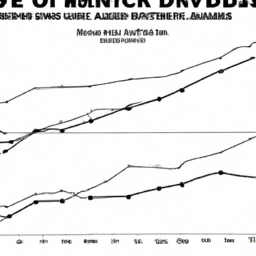Passive income investing is a popular approach to building wealth for retirement. Rather than relying solely on traditional savings accounts, investors seek out opportunities to generate consistent income without actively managing their investments. One strategy that has gained popularity in recent years is dividend investing, or buying stocks, mutual funds, or ETFs that pay significant dividends to their shareholders. In this article, we will explore the benefits and drawbacks of dividend investing for retirement savings and help you decide whether it is the right strategy for you.
Dividend stocks offer long-term investors unique benefits. First and foremost, they provide a regular stream of income that can supplement other sources of retirement income, such as Social Security or a pension. Dividend-paying companies also tend to be more established and financially stable than non-dividend-paying companies, which can make them less risky investments. Additionally, dividends can be reinvested to purchase more shares of the same stock or a different stock, which can compound returns over time.
There are several ways to invest in dividend stocks, including buying individual stocks, mutual funds, and ETFs. One popular option is a dividend ETF, which is a fund that invests exclusively in dividend-paying companies. Dividend ETFs can provide diversification benefits by investing in a portfolio of different companies across various sectors. They can also be a more convenient and cost-effective way to invest in dividend-paying stocks than buying individual stocks.
One example of a dividend ETF is the iShares Select Dividend ETF (NASDAQ:DVY), which seeks to track the performance of the Dow Jones U.S. Select Dividend Index. This ETF's simple objective allows investors to target both capital growth and dividend income in a way that others don't. However, it's important to note that like any investment, dividend ETFs come with their own set of risks and drawbacks, such as fees and expenses, volatility, and potential underperformance compared to the broader market.
Investing in dividend-paying stocks has proved to be a helpful strategy, outperforming global markets over the long term. According to a display on the left, dividend-paying stocks have returned an average of 9.25% annually since 1972, compared to 2.62% for non-dividend-paying stocks. However, it's important to remember that past performance is not a guarantee of future results, and that there are no guarantees when it comes to investing.
Adding dividend growth stocks to your portfolio can provide both income and capital appreciation over the long haul. That makes these picks attractive for investors looking for a combination of income and growth. Some examples of top dividend growth stocks include Apple (NASDAQ:AAPL), Microsoft (NASDAQ:MSFT), and Johnson & Johnson (NYSE:JNJ), which have all consistently increased their dividends over the years.
Investors love dividends, and for good reason. Reinvested dividends have made up 69% of the S&P 500's total investment returns since 1960. However, it's important to keep in mind that not all dividends are created equal. Some companies may offer high dividends but have weaker financials or less potential for growth, while others may offer lower dividends but have strong fundamentals and growth potential. It's important to do your research and choose dividend-paying companies that align with your investment goals and risk tolerance.
In conclusion, dividend investing can be a smart strategy for generating passive income in retirement. However, like any investment strategy, it comes with its own set of risks and drawbacks. It's important to do your due diligence, diversify your portfolio, and choose dividend-paying companies that align with your investment goals and risk tolerance. With the right approach, dividend investing can be a valuable addition to your retirement savings plan.
